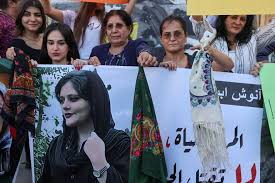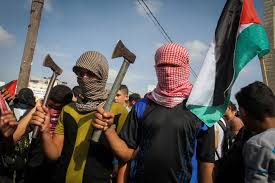
Hamas, an acronym for Ḥarakat al-Muqāwamah al-ʾIslāmiyyah (Islamic Resistance Movement), has long been a subject of international scrutiny and condemnation. Founded in 1987 during the First Intifada, Hamas presents itself as a resistance movement advocating for Palestinian rights. However, beneath this façade lies an organization deeply entrenched in terrorism, human rights abuses, systemic deception, and the exploitation of the very people it claims to represent. This article delves into the multifaceted malevolence of Hamas, exposing its atrocities, manipulative tactics, and the stark contrast between its affluent leadership and the impoverished populace of Gaza.
Origins and Ideological Underpinnings
Hamas emerged from the Muslim Brotherhood, with a charter that explicitly calls for the destruction of Israel and the establishment of an Islamic state in its place. This foundational document is rife with anti-Semitic rhetoric and rejects any peaceful resolution to the Israeli-Palestinian conflict. The organization’s commitment to violent jihad is not merely theoretical; it has manifested in numerous attacks targeting civilians, both Israeli and Palestinian, who oppose its extremist ideology.
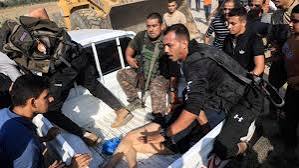
A Legacy of Terrorism and Atrocities
Designated as a terrorist organization by multiple countries, including the United States, the European Union, and Israel, Hamas has orchestrated a series of violent attacks that have resulted in significant loss of life and widespread fear.
The October 7, 2023 Massacre
One of the most egregious examples of Hamas’s brutality occurred on October 7, 2023. On this day, Hamas militants launched a coordinated assault on southern Israel, leading to the deaths of over 1,200 individuals and the abduction of more than 250 people. The attackers did not discriminate between combatants and civilians; entire families were slaughtered, and communities devastated. Human Rights Watch documented these actions as war crimes and crimes against humanity, highlighting the deliberate targeting of civilians and the taking of hostages.
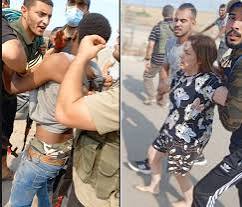
The Re’im Music Festival Massacre
In a particularly heinous act, Hamas militants attacked a music festival in Re’im, resulting in the deaths of over 360 attendees. This assault, characterized by its indiscriminate nature, underscored Hamas’s blatant disregard for human life and international law.
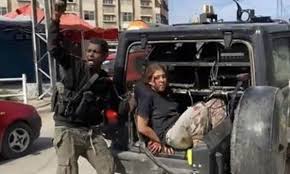
The Be’eri Kibbutz Atrocity
The kibbutz of Be’eri witnessed unimaginable horror as approximately 70 Hamas militants infiltrated the community, murdering over 130 residents, including women, children, and infants. Homes were torched, and the peaceful fabric of the community was irrevocably torn apart.
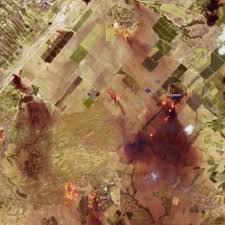
Systematic Deception and Propaganda
Hamas’s malevolence extends beyond physical violence; the organization is adept at manipulating narratives and disseminating propaganda to further its agenda.
Exploitation of Hostages
The abduction of civilians serves a dual purpose for Hamas: instilling fear and leveraging hostages as political pawns. The tragic case of the Bibas family exemplifies this strategy. Yarden Bibas and his family were kidnapped and subjected to severe hardships, including isolation and starvation. Hamas utilized their plight in psychological warfare, spreading false information about their fate to manipulate public perception and demoralize opponents.


Indoctrination and Misinformation
Hamas invests heavily in indoctrinating Gazan youth with extremist ideologies, ensuring the perpetuation of its militant agenda. Educational materials are often laced with hate speech and calls to violence, creating a cycle of radicalization. Additionally, Hamas-controlled media outlets disseminate skewed narratives, portraying the organization as a legitimate resistance movement while obfuscating its terrorist activities.
Economic Exploitation and Leadership Corruption
While the people of Gaza endure crippling poverty and unemployment, Hamas’s leadership indulges in opulence, amassing vast personal fortunes through corruption and exploitation.
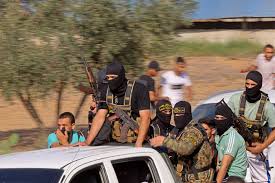
Wealth Amidst Poverty
Reports have surfaced detailing the extravagant lifestyles of Hamas leaders. Ismail Haniyeh, Khaled Mashal, and Moussa Abu Marzouk have each accumulated wealth estimated in the billions, a stark contrast to the dire economic conditions faced by the general population in Gaza. This wealth accumulation is often facilitated through the diversion of international aid and the imposition of heavy taxes on goods entering the region.
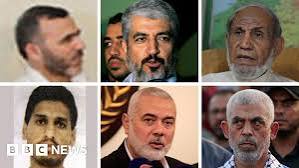
Diversion of Humanitarian Aid
Hamas has been implicated in the misappropriation of funds intended for humanitarian relief. Instead of alleviating the suffering of Gazans, these resources are siphoned off to finance terrorist activities, procure weapons, and construct elaborate tunnel networks for smuggling and military operations. This blatant corruption not only undermines the welfare of the populace but also erodes trust in international aid efforts.
International Condemnation and Legal Repercussions
The global community has consistently denounced Hamas’s actions, leading to legal actions and sanctions aimed at curbing its malign influence.
Designation as a Terrorist Organization
Numerous countries and international bodies have officially designated Hamas as a terrorist organization, subjecting it to sanctions and legal restrictions. This designation reflects a global consensus on the threat Hamas poses to regional stability and international security.
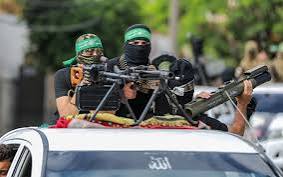
Prosecution of Hamas Operatives
Efforts to hold Hamas accountable have led to legal actions against its members. For instance, in Berlin, four suspected Hamas operatives were tried for planning attacks on Israeli and American targets in Europe. This trial marked a significant step in international efforts to dismantle Hamas’s operational networks and prevent future atrocities.
The Human Cost of Hamas’s Tyranny
The true victims of Hamas’s reign are not just Israelis targeted by terror attacks but also the Palestinian people, especially the citizens of Gaza. The organization rules with an iron fist, silencing dissent, exploiting its own population, and ensuring that suffering remains a political tool rather than a humanitarian crisis to be solved.
The Oppression of Gazans
Hamas maintains strict control over Gaza, eliminating opposition and ruling with a mix of brutality and propaganda. Any dissenters—whether political opponents, journalists, or activists—face severe consequences, including imprisonment, torture, and execution. There have been multiple documented cases of Hamas cracking down on individuals who criticize its leadership or question the allocation of resources.
Instead of using international aid to improve living conditions in Gaza, Hamas prioritizes building tunnels, funding terrorist operations, and enriching its leaders. The population is deliberately kept in dire conditions, as Hamas weaponizes their suffering to garner international sympathy and financial support. Even when Israel or other nations send humanitarian aid, reports have surfaced of Hamas confiscating food, medicine, and supplies, often reselling them at inflated prices or redistributing them exclusively to their loyalists.
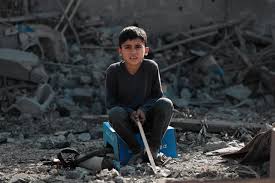
Human Shields and the Use of Civilians as Pawns
One of the most egregious war crimes committed by Hamas is its systematic use of civilians, including children, as human shields. The organization strategically places weapons, command centers, and tunnels beneath hospitals, schools, and residential buildings, deliberately ensuring that any military response results in civilian casualties. This not only violates international law but also demonstrates a complete disregard for human life.
Indoctrination of Children and the Cycle of Violence
Hamas actively indoctrinates Palestinian children, ensuring that hatred and extremism are ingrained from an early age. Their school textbooks glorify martyrdom, teach radical interpretations of Islam, and erase Israel from maps. Hamas-run summer camps train teenagers in military tactics, encouraging them to see violence as the only path forward. By perpetuating this ideology, Hamas ensures that the cycle of terrorism continues, with each new generation becoming pawns in their extremist agenda.
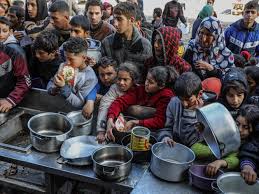
The Urgent Need to Dismantle Hamas
Hamas’s continued existence represents a barrier to peace, stability, and prosperity in the region. Its destruction is not just an Israeli interest but a necessity for the well-being of Palestinians themselves. A future without Hamas is a future where Gaza can thrive, where peace negotiations can progress, and where both Israelis and Palestinians can live without fear of terrorism. The world must stop tolerating Hamas’s crimes under the guise of resistance. The truth is clear: Hamas is an oppressive, deceitful, and terror-driven organization that must be exposed, isolated, and ultimately dismantled for the sake of all those suffering under its rule.
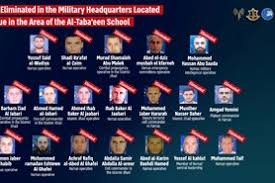
Iran’s Funding of Hamas: The Backbone of Terror
One of the most critical aspects of Hamas’s ability to wage war and sustain its reign of terror is the financial and military backing it receives from the Islamic Republic of Iran. For decades, Iran has been the primary state sponsor of Hamas, providing funding, weapons, and training to ensure the group’s continued capacity for violence and destabilization.
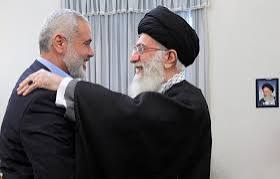
The Scale of Iranian Funding
Iran’s financial support for Hamas is estimated to be in the hundreds of millions of dollars annually. While the exact amount fluctuates, reports suggest that Hamas receives at least $70 million to $100 million per year directly from Iran. This funding is crucial, as it allows Hamas to maintain its military capabilities, smuggle weapons into Gaza, and construct an extensive network of underground tunnels used for smuggling and launching attacks.
Iran’s financial assistance has increased significantly in recent years, especially after Hamas restored close ties with Tehran following a brief period of estrangement due to the Syrian civil war. The Iranian regime views Hamas as a key proxy in its broader strategy of regional destabilization and resistance against Israel.
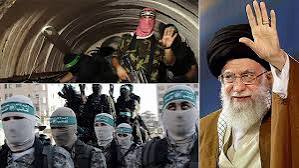
Weapons and Military Training
Beyond financial aid, Iran provides Hamas with weapons, advanced technology, and military training. The Iranian Revolutionary Guard Corps (IRGC), particularly its elite Quds Force, plays a crucial role in arming and instructing Hamas operatives.
Some of the ways Iran has armed Hamas include:
- Providing rockets and missiles: Iranian-made Fajr-5, Grad, and Qassam rockets are frequently used by Hamas to target Israeli civilians. Many of these weapons are smuggled into Gaza through tunnels from Egypt or shipped via illicit sea routes.
- Training fighters: Iranian military advisors train Hamas operatives in Iran, Syria, and Lebanon, providing expertise in guerrilla warfare, explosives, and tunnel construction.
- Supplying technology for weapons production: Hamas has significantly improved its weapons production capabilities thanks to Iranian expertise. Over time, the group has developed longer-range missiles and more sophisticated drones, often based on Iranian designs.
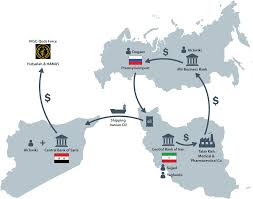
The Iran-Hezbollah-Hamas Axis
Iran’s support for Hamas is part of a broader strategy of using militant proxies to weaken Israel and extend its influence across the Middle East. Alongside Hamas, Iran backs Hezbollah in Lebanon, the Houthis in Yemen, and various Shiite militias in Iraq and Syria. This “axis of resistance” coordinates attacks and shares resources, creating a vast network of Iranian-backed terror groups operating against Israel and its allies.
Hezbollah, another Iranian proxy, has played a major role in Hamas’s military development. Many Hamas operatives receive training from Hezbollah fighters in Lebanon, learning advanced combat techniques, missile launch strategies, and intelligence gathering. Hezbollah has also supplied Hamas with weapons, including precision-guided munitions, further increasing the group’s destructive capabilities.
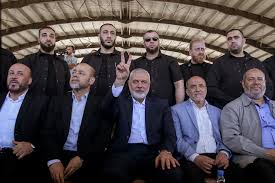
Iran’s Role in the October 7, 2023 Massacre
While Iran officially denies direct involvement in Hamas’s October 7, 2023 attack on Israel, intelligence reports suggest that Tehran provided funding, training, and strategic support leading up to the massacre. Iranian officials publicly praised the attack, and IRGC leaders were reported to have met with Hamas and Hezbollah operatives in the months leading up to the assault.
Israel and Western intelligence agencies have pointed to increased financial transfers and arms shipments from Iran to Hamas in the lead-up to the attack. This support likely played a significant role in enabling Hamas to carry out the large-scale, coordinated assault that killed over 1,200 people and saw more than 250 hostages taken.
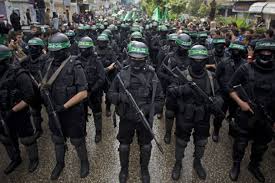
The Global Response to Iran’s Sponsorship of Hamas
The international community has long condemned Iran’s sponsorship of terrorism, imposing sanctions and attempting to curb its influence. The U.S. State Department officially designates Iran as a state sponsor of terrorism, and numerous sanctions target the IRGC, Iranian banks, and companies involved in funding Hamas.
However, Iran continues to find ways to bypass sanctions, often using smuggling networks, cryptocurrency transactions, and front companies to funnel money to Hamas and other terror groups. Despite diplomatic efforts to isolate Iran, its financial and military support for Hamas remains a major obstacle to regional peace and stability.
Why Iran Backs Hamas
Iran’s support for Hamas is driven by both ideological and strategic motives:
- Weakening Israel: Hamas serves as a frontline force in Iran’s broader strategy to challenge Israel’s existence. By funding Hamas, Iran ensures that Israel remains under constant threat from rocket attacks and terrorist incursions.
- Expanding Influence in the Arab World: By backing Hamas, a Sunni organization, Iran (a Shiite-majority state) seeks to expand its influence in the Arab world and present itself as the leader of the anti-Israel resistance.
- Disrupting U.S. and Western Interests: Iran’s proxies, including Hamas, frequently attack Western allies and interests in the Middle East. Tehran’s goal is to destabilize the region, making it harder for the U.S. and its partners to maintain security.
Cutting Off Hamas’s Lifeline: The Need to Target Iran
If Hamas is to be truly dismantled, its main source of funding and weaponry—Iran—must be effectively countered. While sanctions and diplomatic pressure have limited some of Iran’s activities, stronger enforcement and coordination are needed to cut off the financial and military pipelines that sustain Hamas’s terror machine.
The world must recognize that Hamas is not an independent resistance group but a heavily armed, well-financed proxy of Iran, operating at the expense of both Israeli and Palestinian lives. Until Iran’s financial and logistical support for Hamas is decisively shut down, the cycle of terrorism and violence will continue.
